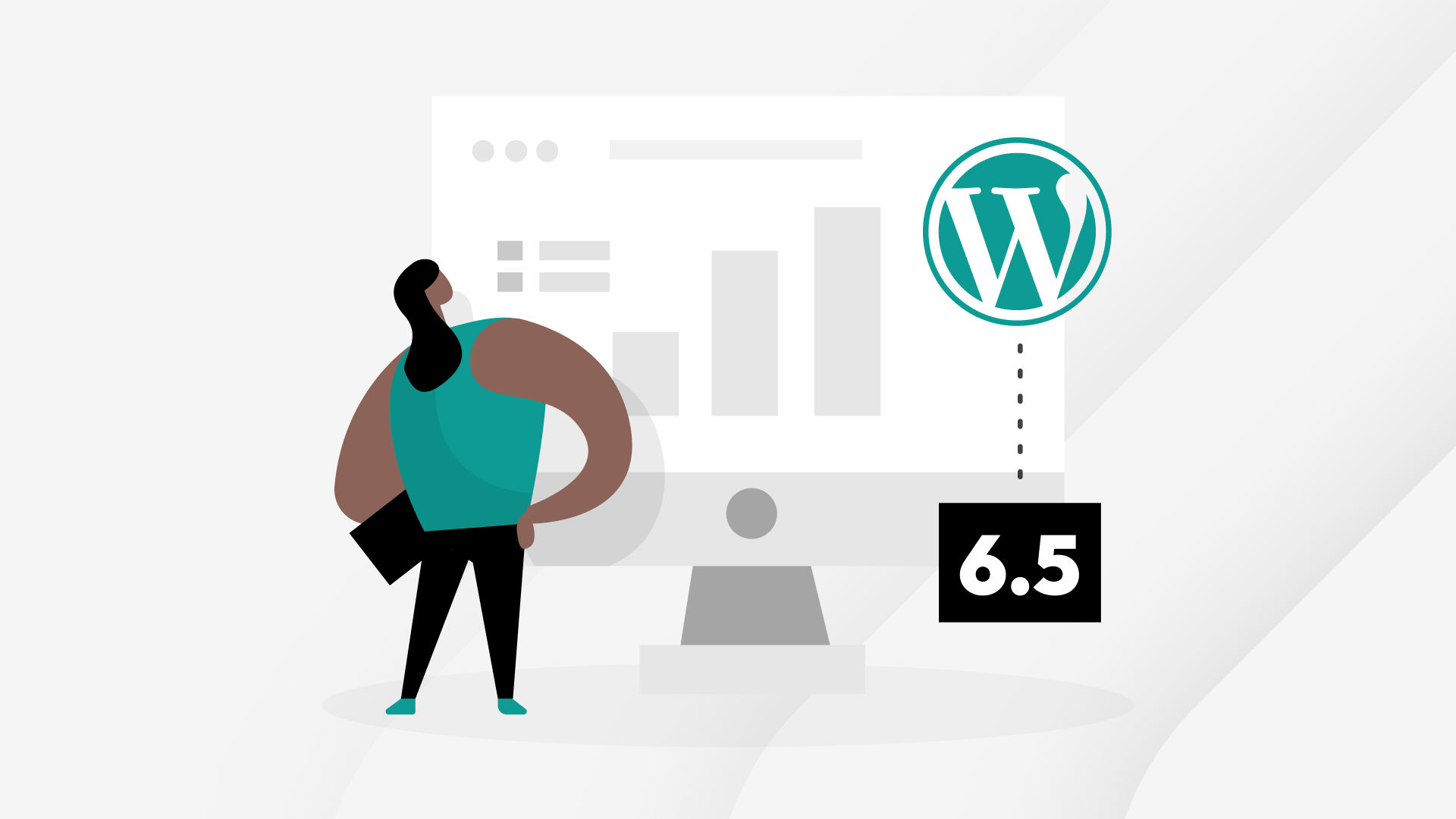The latest WordPress release 6.5 is the first of 2024, with two more planned in July and November. While the last release of each year usually brings a new default theme and more visual changes, the other major releases often bring functionality and features for developers. WordPress 6.5 is no exception to this, and there are some features that benefit larger websites specifically.
Major features of WordPress 6.5 “Regina”
Interactivity API
This new API brings interactivity to the frontend of a website. It enables websites, that don’t require a reload, when an action is performed. A working example of what’s possible is the wpmovies.dev website, showing functionalities such as a favorites list, live search, and pagination without any page reload.
Font Library
Using custom/brand font is an important feature when implementing a theme using the corporate identity of an enterprise website. With WordPress 6.5 including the first version of the Font Library, it is now easier than ever to install locally hosted web fonts.
More Block Theme functionality for Classic Themes
While new enterprise websites are often built using the capabilities of the Site Editor with a Block Theme, many current sites still use a Classic Theme. Scores of features added to the Site Editor were not available to them. With this new release, Classic Themes can opt-in to use features like controls for borders, links, margins, padding and more. They can also use Patterns in the Appearance admin menu. Allowing classic themes to use these new features brings a modern touch to existing enterprise websites without necessitating a full redesign.
Block Bindings API
Enterprise websites frequently utilize Custom Post Types and meta fields. Historically, displaying this information required bespoke blocks because Core blocks couldn’t incorporate meta field values. However, with the introduction of the Block Bindings API, dynamic data can now be integrated directly into the content of Core blocks.
Block Hooks
Block Hooks were introduced in WordPress 6.4 and are now extended for more use cases. One example is the possibility to hook into the Core Navigation block and add content inside the Navigation block. This allows these child blocks to be toggled in a mobile navigation as well.
Renaming blocks
The new version of the Block Editor bundled with WordPress 6.5 comes with a variety of improvements. One of them is the possibility to rename (almost) all blocks. On an enterprise website with a complex structure, this can help anyone who wants to edit the content to quickly identify the block they need to change in the list view. The renaming is now on by default for Core and custom blocks. This feature is particularly beneficial for large teams in enterprise environments where clarity and efficiency in content management are crucial.
Improved performance for translations
WordPress 6.5 comes with a wide range of performance optimizations. A major one for enterprise websites offering multiple languages are the translation improvements. Ever since translations were made available in WordPress 1.2 around 20 years ago, they were using .mo files and a custom PHP implementation to parse these files. This was done on every single page load, adding a great performance hit on websites using a different language than English (US). With this change, an alternative PHP translation file is being used that would increase the performance significantly. If this new PHP translation file is not found, Core will still use .mo files. For global enterprise sites, this means faster load times and a better user experience across different regions and languages.
Plugin Dependencies
Complex websites use a variety of plugins. For an enterprise website, it’s quite common to enhance or alter the functionality of well-known plugins, so they fit the project needs. In such cases, those plugins depend on other plugins. When projects are installed with Composer, this can make sure the dependent plugin is installed, but it can’t make sure it’s also activated. This is what the Plugin Dependencies feature wants to solve. This resolves a common pain point for enterprises managing a large stack of interdependent plugins, streamlining maintenance and updates.
Conclusion
In conclusion, WordPress 6.5 marks a significant milestone for 2024, tailoring especially to the needs of larger websites. With innovations like the Interactivity API, the Font Library, and expanded capabilities for Classic Themes, this update highlights the importance of flexibility and performance in web design. The introduction of the Block Bindings API and the extension of Block Hooks offer new avenues for customization and efficiency for developers and content managers alike. The ability to rename blocks and the enhanced performance for translations further demonstrate a commitment to improving user experience and efficiency. WordPress 6.5 is a clear indicator that the platform continues to evolve to meet the demands of modern, high-performing websites while maintaining an accessible and user-friendly environment for developers, designers, and content managers.
Learn more about how WordPress leads the market in security, performance, cost of ownership, and third-party integrations.
